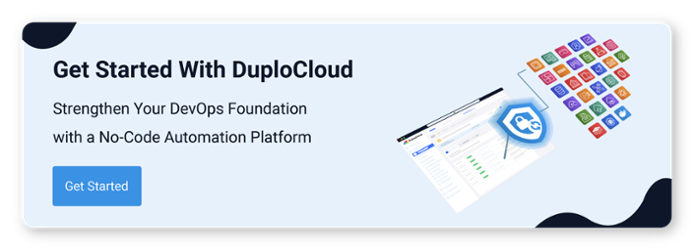These metrics indicate whether you’re on track to meet your goals
In DevOps, the path to market isn’t a straight line so much as a winding road full of unexpected complications and innovative solutions. While working your way from one milestone to the next, it’s easy to become hyper-focused on the task in front of you, rather than the project as a whole.
To ensure no one is losing sight of the bigger picture and forgetting your larger objectives and key results (also known as DevOps OKRs), it’s important to take a step back once in a while and evaluate whether you’re still on track. You can measure your progress using a series of key performance indicators that show where you’re improving and where you’re falling behind. These essential DevOps KPIs will keep you on the path to success and help you navigate the twists and turns along the way.
DevOps KPIs: 7 Metrics to Track
Change Failure Rate
Any engineer will tell you that in software development, some degree of failure is to be expected. However, it’s important to track how often code deployments fall short of expectations in order to identify where the problems lie. The percentage of code deployments that cause failures in production is known as the change failure rate, and it’s one of the most important KPIs for DevOps engineers to track.
A consistently high change failure rate indicates problems in the deployment pipeline. To lower your change failure rate, take another look at your processes and identify areas for improvement. The solution might be as simple as leveraging Infrastructure as Code to automate more of the pipeline, as manual infrastructure is prone to higher failure rates.
Deployment Frequency
When evaluating DevOps metrics and KPIs, knowing your deployment frequency should be a top priority. This KPI refers to the rate at which updated code is deployed, and it’s measured by counting and averaging the number of deployments over a chosen time period. While the number of deployments will vary by team and by project, you should aim for anywhere between one a day and one a week.
Why is deployment frequency so important? Because it shows how efficiently your teams are working. A higher deployment frequency lets you know that things are running smoothly, while a lower frequency indicates friction in the deployment process. If you find yourself facing the latter scenario, it may be due to a lack of automation. Click here to learn how DuploCloud’s automation platform accelerates infrastructure provisioning ten times over while decreasing cloud operating costs by 75%.

Deployment Speed
How long does it take to create code from scratch and release it? The answer is your deployment speed, another essential DevOps KPI that can indicate inefficiencies in the pipeline. If your deployment speed isn’t gradually improving, you’re at risk of falling behind and missing your target launch window. In that case, it’s time to examine the process from creation to deployment and figure out where the bottlenecks are.
As you work out the kinks in your pipeline, be wary of dramatic spikes in deployment speed — these can mean you’ve created more problems while fixing the old ones. Aim for gradual improvement over the course of development, but don’t sacrifice the quality of your software in favor of speed.
Lead Time
While deployment speed refers to the time between creating code and releasing it, lead time covers the time elapsed between fixes. They’re similar concepts, but lead time refers to code that’s already live and in production. As any engineer knows, updating code in a live environment comes with its own challenges — you can’t simply shut everything down until you’ve found a fix.
Efficient DevOps teams should aim for lead times of just a few hours; once you’re measuring in days or weeks, you’re risking customer satisfaction. Longer lead times can indicate bottlenecks, unaddressed development issues, or simply a need for more automation.
Mean Time to Recovery (MTTR)
Sometimes called mean time to restore, MTTR is the time it takes to recover from failure. Because deployment setbacks are a normal part of the DevOps process, developers and engineers need to be able to bounce back quickly and address these setbacks. MTTR is a reflection of your team’s efficiency when it comes to analyzing deployment issues and finding solutions.
The longer your team works together, the shorter the MTTR should be. If you find it trending in the opposite direction, it might be time to look into continuous integration/continuous delivery systems, which can improve testing processes and help detect potential weaknesses.
Planning Accuracy
Out of the total number of deployments you’ve planned, how many were actually implemented? The resulting percentage is your planning accuracy, an important metric that weighs your team’s expectations versus the current reality. Many projects fluctuate in scope throughout the course of development, so not having a perfect planning accuracy doesn’t necessarily indicate problems in the pipeline — but higher is better.
Pull Request Size
Pull request size refers to the number of code changes within a single pull request. When merging changes from one branch to another, the pull request size reflects the scope of the pull request and helps developers plan accordingly. For example, a very large pull request will take considerably more resources. Bigger pull requests also increase the odds of something going wrong.
It might seem like bigger pull requests are more efficient, but smaller pull request sizes actually make it easier to track code changes and identify issues. Rather than trying to implement too many changes at once, break down massive pull requests into more manageable tasks.
Meet DevOps Metrics and KPIs With DuploCloud
Knowing the essential DevOps KPIs and tracking them carefully will put you on the path to success — but it’s only the first step. If you find yourself falling short of your goals, partnering with a no-code/low-code automation platform can help. DuploCloud’s innovative solution streamlines DevOps operations with automated provisioning, CI/CD, and compliance standards that meet your security needs. Get in touch to set up a free demo.








